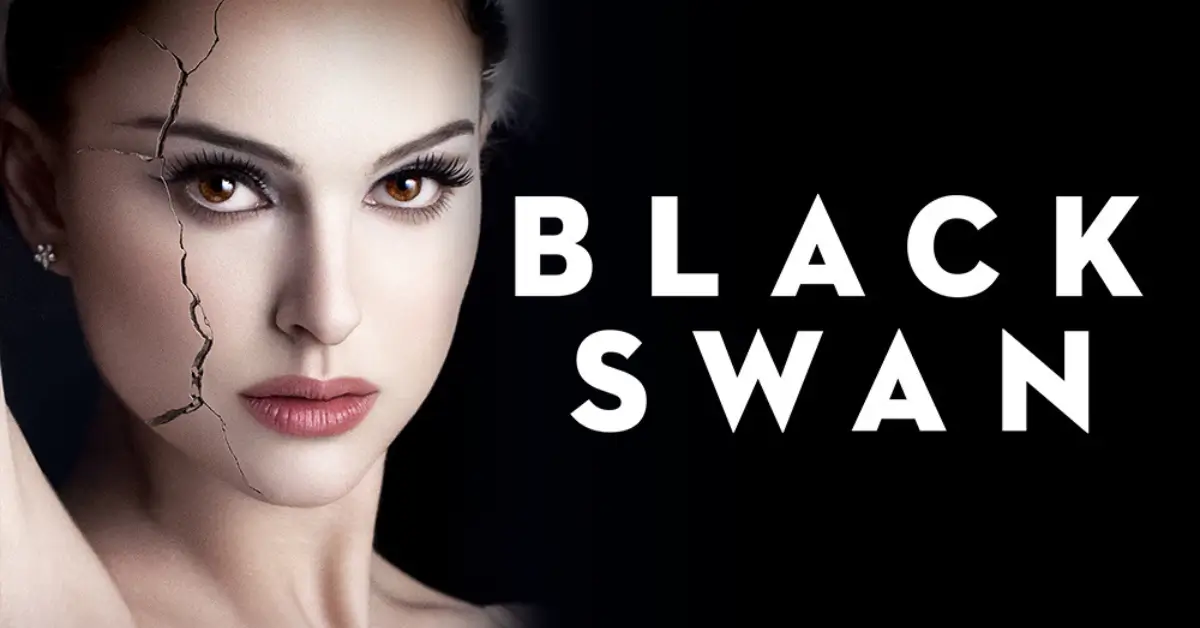Black Swan: Dancing on the Edge of Sanity and Perfection
In the realm of films exploring mental health, Darren Aronofsky’s psychological thriller “Black Swan” stands as a hauntingly powerful examination of perfectionism, identity, and psychological disintegration. Through its mesmerizing visuals and unforgettable performances, the film invites viewers into the fracturing mind of a ballet dancer pushed to the breaking point by both external pressures and inner demons. “Black Swan” offers a complex, stylized portrayal of mental illness that continues to provoke discussion among viewers and mental health professionals alike, raising important questions about the psychological toll of artistic pursuit and the blurry line between dedication and self-destruction.
Thank you for reading this post, don't forget to subscribe!Basic Film Information
Title: Black Swan
Release Date & Production Year: December 3, 2010 (limited), December 17, 2010 (wide release)
Director: Darren Aronofsky, known for his psychologically intense, visually striking films exploring themes of obsession and self-destruction
Screenwriter: Mark Heyman, Andres Heinz, and John McLaughlin
Main Cast & Characters:
- Natalie Portman as Nina Sayers, a perfectionist ballet dancer struggling with her sanity as she prepares for the dual role in Swan Lake
- Vincent Cassel as Thomas Leroy, the demanding artistic director of the ballet company
- Mila Kunis as Lily, a free-spirited new dancer who represents Nina’s antithesis
- Barbara Hershey as Erica Sayers, Nina’s controlling and emotionally abusive mother
- Winona Ryder as Beth MacIntyre, the aging prima ballerina being replaced
- Benjamin Millepied as David, the male lead dancer
Genre: Psychological Thriller/Horror
Awards Won: Academy Award for Best Actress (Natalie Portman); Golden Globe for Best Actress – Motion Picture Drama (Portman); BAFTA Award for Best Actress (Portman); numerous critics’ circle awards for direction, cinematography, and performance
Runtime & Rating: 108 minutes, Rated R for strong sexual content, disturbing violent images, language, and drug use

Plot Summary
General Overview
“Black Swan” follows Nina Sayers, a dedicated ballet dancer in a prestigious New York City company who wins the coveted dual role of the White Swan/Black Swan in “Swan Lake.” While technically perfect for the innocent White Swan, Nina struggles to embody the seductive, uninhibited Black Swan. As opening night approaches, the pressure from her controlling mother, demanding director, and perceived rivalry with newcomer Lily pushes Nina toward psychological breakdown. Reality and hallucination increasingly blur as Nina undergoes a dark transformation in her desperate pursuit of perfection.
Mental Health Themes
The film explores several interconnected mental health issues including obsessive-compulsive tendencies, eating disorders, psychosis, dissociative identity disorder symptoms, and self-harm. At its core, “Black Swan” examines how perfectionism, when taken to extreme, can fragment identity and trigger psychological distress. The film also addresses the impact of emotional abuse, sexual repression, and the psychological toll of competitive artistic environments.
Key Turning Points
Several pivotal moments chart Nina’s psychological deterioration: her discovery of self-inflicted scratches on her back; her hallucinated sexual encounter with Lily; her confrontation with her perceived doppelgänger; and her final transformation during the performance, culminating in her hallucinated self-stabbing. These moments mark progressive breaks from reality as Nina’s mind fractures under pressure.
Ending Analysis
The film’s ambiguous ending shows Nina apparently achieving artistic transcendence at the cost of her life, having stabbed herself during what she believes was a struggle with Lily (but was actually a hallucination). Her final words, “I felt it… perfect… I was perfect,” suggest both tragedy and a dark triumph Nina finally embodies the Black Swan completely, but only through complete psychological disintegration. The ending leaves viewers questioning whether Nina’s sacrifice was an act of madness or the ultimate artistic commitment.
Setting & Cinematic Techniques
Filming Locations
Set primarily within the confined spaces of ballet studios, theater backstage areas, and Nina’s apartment in New York City, the locations create a claustrophobic atmosphere that mirrors Nina’s psychological confinement. The stark contrast between the pristine, mirror-filled dance studio and Nina’s childlike pink bedroom highlights her stunted emotional development and the pressure cooker environment of professional ballet.
Cinematography
Cinematographer Matthew Libatique employs handheld camera work that creates an intimate, documentary-like quality, often following Nina in close-up to emphasize her isolation and growing paranoia. Mirrors are used extensively as visual motifs, representing Nina’s fractured self-perception and dissociation. The color palette transforms gradually starting with whites and pinks that represent Nina’s innocence and shifting toward blacks and reds as her darker impulses emerge.
Sound & Music
The film’s sound design strategically uses Tchaikovsky’s “Swan Lake” score, distorting and fragmenting it during hallucinatory sequences. Subtle sound effects like wing flutters, bone cracks, and heartbeats create an unsettling aural landscape that places viewers inside Nina’s deteriorating mental state. The breathing sounds that persist throughout heighten tension and remind viewers of the physical exertion and anxiety Nina experiences.
Acting & Character Portrayal
Lead Actor’s Performance
Natalie Portman delivers an Oscar-winning performance of extraordinary psychological depth, physically transforming through months of ballet training while conveying Nina’s fragile mental state through subtle facial expressions and physicality. Portman masterfully portrays the character’s evolution from rigid perfectionism to psychological unraveling, making Nina’s hallucinations feel viscerally real to viewers.
Supporting Cast
Vincent Cassel brings nuanced manipulation to Thomas Leroy, creating a character who is simultaneously abusive and artistically legitimate. Barbara Hershey’s portrayal of Erica Sayers expertly conveys the suffocating control of a mother living vicariously through her daughter. Mila Kunis as Lily provides the perfect contrast to Nina, embodying freedom and spontaneity that both attracts and terrifies the protagonist.
Accuracy & Authenticity
While stylized and heightened for dramatic effect, Portman’s portrayal captures authentic aspects of psychological breakdown, particularly the disorientation and terror of losing one’s grip on reality. The film accurately depicts how extreme stress and pressure can exacerbate underlying mental health vulnerabilities. The portrayal of the ballet world’s physical and psychological demands has been validated by many professional dancers, though some have noted artistic exaggerations.
Mental Health Representation: Strengths & Weaknesses
Psychological Accuracy
“Black Swan” presents a complex, expressionistic rather than strictly clinical portrayal of mental illness. While it doesn’t align perfectly with any single diagnosis, the film effectively captures the experience of psychosis the genuine inability to distinguish between reality and hallucination. The film’s strength lies in showing how Nina’s psychological breakdown develops gradually through a combination of predisposing factors and environmental stressors.
Stigmatization vs. Awareness
The film walks a fine line regarding stigma. On one hand, it connects mental illness with artistic genius, potentially romanticizing psychological suffering. On the other hand, it compassionately shows how external pressures and childhood experiences contribute to Nina’s condition, avoiding simplistic “madness” narratives. The horror elements risk sensationalizing mental illness, yet they effectively communicate the terrifying subjective experience of losing touch with reality.
Impact on Public Perception
“Black Swan” increased public discussion about perfectionism, eating disorders, and the psychological demands of artistic professions. Mental health professionals have noted that the film has prompted some patients to seek help for perfectionism-related struggles. However, some critics argue that by framing mental illness within a horror-thriller context, the film may reinforce perceptions of psychological conditions as frightening or dramatic rather than as common, treatable health issues.
Critical Reception & Awards
Critics’ Reviews
“Black Swan” received widespread critical acclaim, with particular praise for Portman’s performance and Aronofsky’s direction. The film holds a 85% approval rating on Rotten Tomatoes. Critics highlighted its visual style, psychological intensity, and artistic ambition. Some reviewers did question whether the film’s melodramatic elements undermined its serious exploration of mental health, while others praised precisely this operatic approach as appropriate to its ballet setting.
Audience Reactions
The film provoked strong reactions among viewers, becoming a commercial success while generating substantial discussion about its portrayal of mental illness. Mental health advocates had mixed responses appreciating its visceral depiction of psychological suffering while questioning its blending of mental illness with supernatural horror elements. Ballet dancers and performing artists often reported finding the portrayal of performance anxiety and perfectionism particularly resonant.
Awards & Nominations
Beyond Portman’s Academy Award, Golden Globe, and BAFTA wins for Best Actress, the film received multiple Oscar nominations including Best Picture and Best Director. The film’s exploration of psychological breakdown through the lens of artistic pursuit struck a chord with critics and awards bodies, recognizing both its technical achievements and its emotional impact.
Cultural & Social Impact
Discussions Sparked
“Black Swan” generated significant conversation about perfectionism in high-pressure fields, particularly those involving young women. The film prompted dialogue about the psychological costs of artistic excellence and the prevalence of mental health issues in competitive performing arts. Additionally, it raised awareness about the subtle forms of emotional abuse and control that can contribute to psychological distress.
Influence on Other Films
The film’s visual approach to portraying subjective psychological states has influenced subsequent thrillers and horror films dealing with mental health themes. Its success demonstrated audience appetite for psychologically complex female protagonists and helped pave the way for more films exploring women’s interior lives and mental health struggles.
Mental Health Advocacy
While not explicitly tied to advocacy organizations, “Black Swan” has been used in educational contexts to discuss perfectionism, body image issues, and the importance of psychological support for performing artists. Some dance companies and performing arts schools have cited the film when implementing mental health resources and addressing toxic competitive cultures.
Personal Reflection & Final Thoughts
“Black Swan” provides remarkable insight into how external pressures can activate and exacerbate psychological vulnerabilities. Its greatest strength lies in creating a subjective experience of psychosis helping viewers understand how hallucinations can feel completely real to the person experiencing them. The film’s nightmare-like quality effectively communicates the terror of losing one’s grip on reality.
I would recommend this film with caution to someone struggling with mental health. While its artistic portrayal of psychological breakdown may resonate with those who have experienced similar symptoms, the film’s intensity and horror elements could be triggering for viewers with psychosis, dissociative disorders, or eating disorders. The film is more valuable as an artistic exploration than as an educational tool about specific conditions.
If there’s room for improvement, the film could have provided more context about the treatability of mental health conditions like Nina’s. By focusing exclusively on Nina’s breakdown without showing any possibility of recovery, the film potentially reinforces the notion that severe mental illness leads inevitably to tragedy.
Conclusion
“Black Swan” remains a significant artistic achievement in cinema’s exploration of mental health, using the high-pressure world of ballet as a backdrop for examining how perfectionism and external demands can fracture the psyche. Through its expressionistic approach, the film creates an immersive experience of psychological distress that generates empathy rather than distance.
The film’s lasting impact stems from its refusal to provide easy answers about where artistic dedication ends and self-destruction begins. By blurring the line between reality and hallucination, “Black Swan” challenges viewers to question their own perceptions and consider the psychological cost of society’s demand for perfection, particularly from women.
What are your thoughts on this film’s portrayal of perfectionism and psychological breakdown? Does its artistic approach enhance or detract from its exploration of mental health themes?

